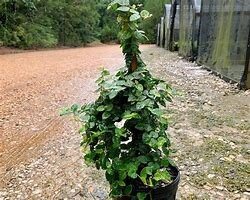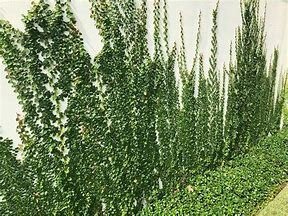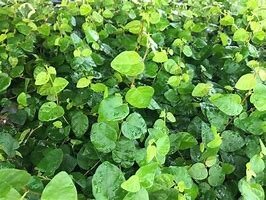 Image 1 of 3
Image 1 of 3

 Image 2 of 3
Image 2 of 3

 Image 3 of 3
Image 3 of 3




Creeping Fig Ivy Live 1 Gallon Plant
$14.99
sold out
Creeping fig vine is often sold as a houseplant. The small leaves and lush green growth make for both a lovely table plant or a hanging plant. When growing creeping fig as a houseplant, it will need bright, indirect light. For proper indoor creeping fig care, the soil should be kept moist but not overly wet. It is best to check the top of the soil before watering. If the top of the soil is dry, it needs to be watered. You will want to fertilize your creeping fig in the spring and summer about once a month. Do not fertilize it in the fall and winter. In the winter, you may need to provide extra humidity to your creeping fig plant. For extra interest, you can add a pole, a wall or even a topiary form to your creeping fig houseplant container. This will give the creeping fig vine something to climb and eventually cover.
If you live in USDA plant hardiness zone 8 or higher, creeping fig plants can be grown outside year round. They are often used as either a ground cover or, more commonly, as a wall and fence cover. If allowed to grow up a wall, it can grow up to 20 feet (6 m.) tall. When grown outdoors, creeping fig like full or part shade and grows best in well-draining soil. In order to look its best, creeping fig should get about 2 inches (5 cm.) of water a week. If you do not get this much rainfall in a week, you will need to supplement with the hose.
If you live in USDA plant hardiness zone 8 or higher, creeping fig plants can be grown outside year round. They are often used as either a ground cover or, more commonly, as a wall and fence cover. If allowed to grow up a wall, it can grow up to 20 feet (6 m.) tall. When grown outdoors, creeping fig like full or part shade and grows best in well-draining soil. In order to look its best, creeping fig should get about 2 inches (5 cm.) of water a week. If you do not get this much rainfall in a week, you will need to supplement with the hose.
Creeping fig vine is often sold as a houseplant. The small leaves and lush green growth make for both a lovely table plant or a hanging plant. When growing creeping fig as a houseplant, it will need bright, indirect light. For proper indoor creeping fig care, the soil should be kept moist but not overly wet. It is best to check the top of the soil before watering. If the top of the soil is dry, it needs to be watered. You will want to fertilize your creeping fig in the spring and summer about once a month. Do not fertilize it in the fall and winter. In the winter, you may need to provide extra humidity to your creeping fig plant. For extra interest, you can add a pole, a wall or even a topiary form to your creeping fig houseplant container. This will give the creeping fig vine something to climb and eventually cover.
If you live in USDA plant hardiness zone 8 or higher, creeping fig plants can be grown outside year round. They are often used as either a ground cover or, more commonly, as a wall and fence cover. If allowed to grow up a wall, it can grow up to 20 feet (6 m.) tall. When grown outdoors, creeping fig like full or part shade and grows best in well-draining soil. In order to look its best, creeping fig should get about 2 inches (5 cm.) of water a week. If you do not get this much rainfall in a week, you will need to supplement with the hose.
If you live in USDA plant hardiness zone 8 or higher, creeping fig plants can be grown outside year round. They are often used as either a ground cover or, more commonly, as a wall and fence cover. If allowed to grow up a wall, it can grow up to 20 feet (6 m.) tall. When grown outdoors, creeping fig like full or part shade and grows best in well-draining soil. In order to look its best, creeping fig should get about 2 inches (5 cm.) of water a week. If you do not get this much rainfall in a week, you will need to supplement with the hose.